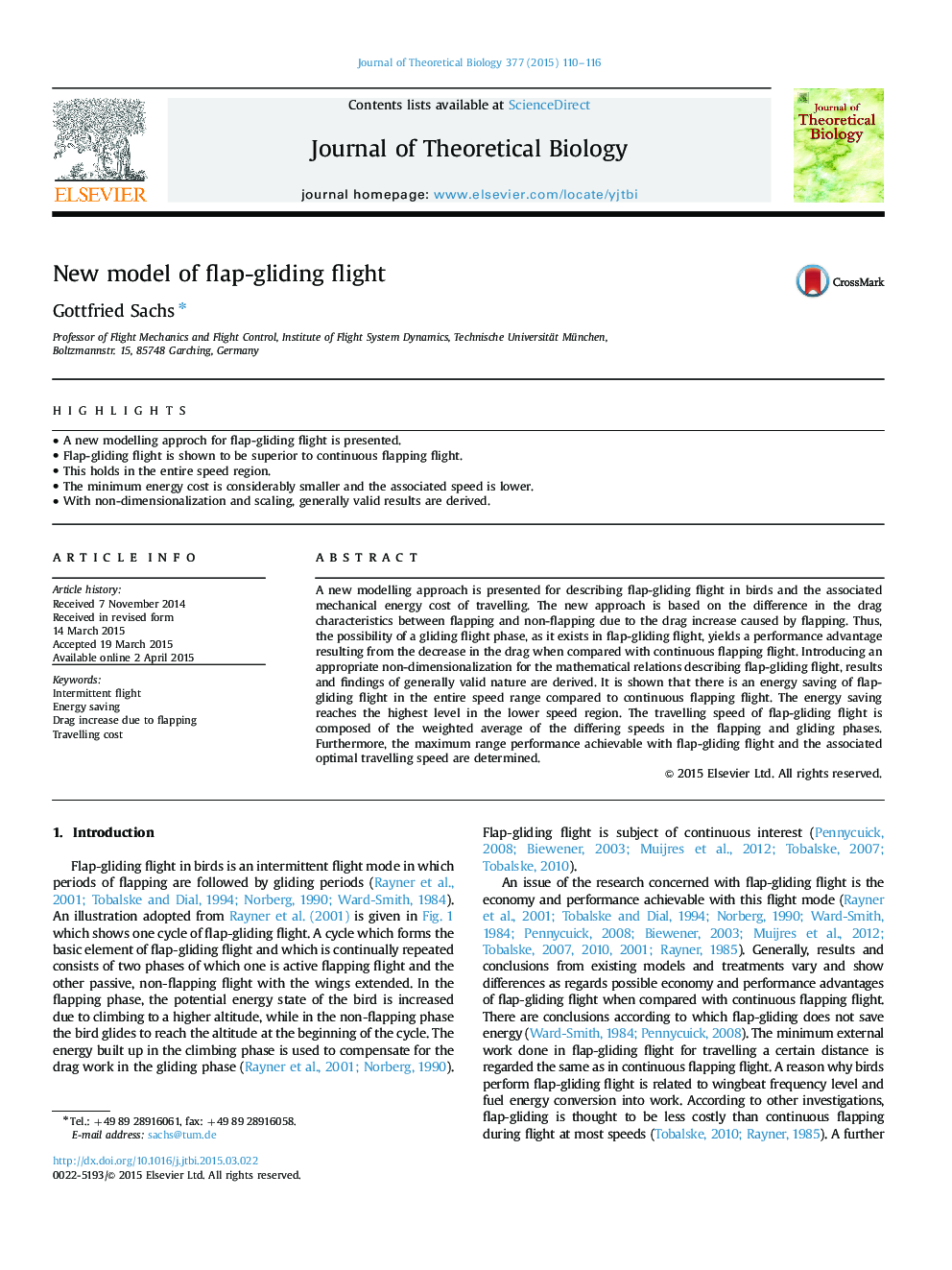| Article ID | Journal | Published Year | Pages | File Type |
|---|---|---|---|---|
| 4496058 | Journal of Theoretical Biology | 2015 | 7 Pages |
Abstract
A new modelling approach is presented for describing flap-gliding flight in birds and the associated mechanical energy cost of travelling. The new approach is based on the difference in the drag characteristics between flapping and non-flapping due to the drag increase caused by flapping. Thus, the possibility of a gliding flight phase, as it exists in flap-gliding flight, yields a performance advantage resulting from the decrease in the drag when compared with continuous flapping flight. Introducing an appropriate non-dimensionalization for the mathematical relations describing flap-gliding flight, results and findings of generally valid nature are derived. It is shown that there is an energy saving of flap-gliding flight in the entire speed range compared to continuous flapping flight. The energy saving reaches the highest level in the lower speed region. The travelling speed of flap-gliding flight is composed of the weighted average of the differing speeds in the flapping and gliding phases. Furthermore, the maximum range performance achievable with flap-gliding flight and the associated optimal travelling speed are determined.
Keywords
Related Topics
Life Sciences
Agricultural and Biological Sciences
Agricultural and Biological Sciences (General)
Authors
Gottfried Sachs,
